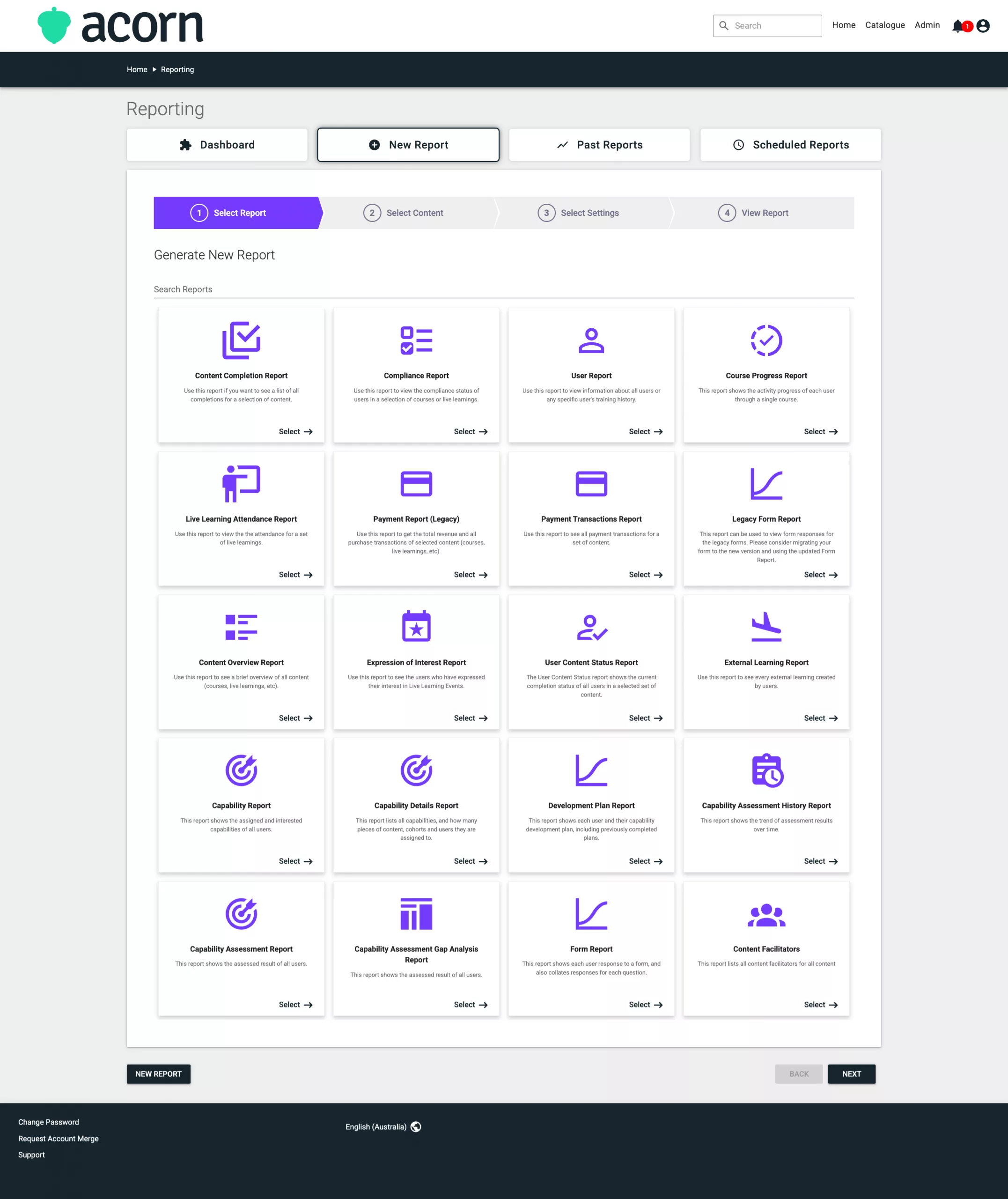How to Identify Managers Developing Top Talent Using Acorn PLMS

Two roles in an organization share a rough reputation: HR and middle management. Interestingly, both have an important role to play in talent development.
Developing top talent in your organization is kinda, sorta, definitely a major deal. It’s a massive part of why we’ve developed our Capabilities platform. But how do you know who is developing that talent? How do you know what best practices are for developing your organization’s unique capabilities?
We cover how you can do this with Capabilities in this guide. Let’s go.
Why identifying top managers matters
It’s no secret that managers have the greatest impact on employee engagement. Why does that matter? They’re the make-or-break when it comes to finding, nurturing, and, most importantly, keeping top talent within your organization.
Managers are on the ground, shaping the employee experience. They do this in ways that also indicate good leaders:
- Filtering the tasks and information employees need to prioritize and know to have the greatest impact
- Communicating the company mission and aligning individual goals with it
- Managing the personal pressures and dynamics within a team
- Finding opportunities for growth and progression for their teams.
Good or bad habits flow down the line as people replicate what their managers do. Managers who consistently develop talent ensure a) you’re not scrambling to fill roles later and b) people are engaged with development opportunities within your organization (aka, more likely to stay).
On the flip side, leadership is somewhat of a chain reaction. Bad managers exacerbate turnover, absenteeism, and the rate of productivity, not solely because they create toxic environments, but because poor managerial support, stressful workloads, and lack of progression tell people they are not valued by their employer.
Research shows time and time again that people want to feel valued and rewarded at work. As Acorn’s President Keith Metcalfe says, leaders have one job: to inspire and help others.
But identifying high-potential employees and nurturing them does not always come naturally to managers. Even if they have a natural inclination to do this, they often can’t without the organizational levers to do so.
Another angle to think about it is: if not managers identifying and nurturing the next generation of talent in your organization, then who? HR? That becomes harder and harder to do the larger the company. You’ll miss the nuance of understanding attitude and everyday aptitude that managers see. Great managers, on the other hand, find and capitalize on what is unique about a person, and they do so with the perspective of what the organization needs. In short, they turn talent into performance.
How to identify your top managers
What you need for this process:
- Capabilities module turned on
- A connected LMS, whether Acorn or otherwise
- A capability framework, either your own or pulled from our Capability Library
- Capability assessments and training programs done, with relevant data available.
1. Start a new Capability Development Report
Via the Reporting dashboard, select “New Report” and choose the Capability Assessment Gap Analysis Report template.

Oh yeah, we’ve got a lot of reports you can choose from.
Once in, select the capabilities you want to analyze. Filter the report by:
- Username or first and last name
- Date
- User fields like department or job role
- Cohort.
You can assign learners to cohorts within Acorn based on their role or team. Ergo, the cohort filter is going to be most useful here, because you’ll be able to filter by teams or departments.
Generate the report when you’ve got all your filters sorted.
2. Analyze report results
The report will show you key capability metrics segmented by:
- Not assessed
- Assessed below assigned level
- Assessed above assigned level
- User
- Self-assessed score
- Supervisor score
- Comments
- Capability information.
These give you a good foundation for how people are performing and to spot trends or patterns within teams. What you’re looking for are managers whose teams are:
- Consistently improving in proficiency over time
- Steadily progressing through personalized development plans, not just engaging in content when compliance rolls around
- In the lower proportion of unassessed capabilities, as it shows they are having regular performance conversations.
Another key indicator is who provides detailed and constructive feedback in capability assessments. According to Gallup, managers who are actively coaching their teams are more likely to hone in on individual strengths and areas for future improvement. Instead of “Ben met his KPIs”, they’d note specific examples of successful outcomes, the business impact of those wins, and anything they’d like to see Ben work on in the next performance cycle.
3. Make action plans
Top managers will only stay top performers for so long before they burn out or leave. Ergo, there’s two things you want to do:
- Recognize (and reward)
- Replicate their success.
Recognizing & rewarding top managers
Recognition and rewards can come in a few forms, but it’s always best if it’s top-down. Gallup found almost one quarter of employees say the most memorable form of recognition comes their CEO, but if that’s just not feasible, try for their manager’s manager. Frequency also rates highly; at Acorn, we do a “Friday Good News” post shared organization-wide every week. It’s collated by one person from all the team leaders and executives, who shout out good work on their team. You don’t just have to keep that an internal message; external praise, such as on your company’s LinkedIn page, if it works for your brand, goes that extra mile to recognizing top managers.
Rewards are dependent on your culture and processes, but capabilities again make it clear to tie rewards to performance. By job levelling against proficiency levels, you can match rewards against certain standards of performance.
Say Joe the team manager has the capability of talent development. The assigned proficiency level for Joe’s role is Proficient, which focuses on providing growth opportunities to enhance team performance. But based on the results of his team’s collective capability and Joe setting up succession plans for a couple of his people, Joe’s manager Megan assesses him at Advanced. This is assigned to the next job level up, and Megan decides this warrants a small bonus or pay bump for Joe. Maybe Megan even decides to put Joe on his own succession plan to move into a role a level up.
Replicating the success of top managers
Something we believe wholeheartedly is that you likely have an untapped treasure trove of knowledge within your organization. Turning your top managers into mentors for junior or potentially struggling managers has two benefits.
- Business critical information is shared in the context it will be applied, i.e., other managers will learn how to coach and nurture their own teams within your company’s culture and policies.
- Top managers get a little confidence boost in sharing their best practices with others.
Aside from mentoring, you want to document top managers’ coaching and feedback styles. (We have a learning feature on the cards for this, keep your eyes peeled!) In the meantime, you can:
- Share examples of good feedback within manager communications channels
- Screen record coaching sessions that happen via video call
- Have a five-minute “best practice” session in team leader meetings where one manager shares a tactic that’s worked for them.
Oh, and if you’re wondering how to identify managers who need coaching or development, look for those with a heap of “not assessed” capabilities, stagnant or declining proficiency in their team, who leave generic feedback.
Final thoughts
Identifying the managers who are developing top talent in your organization doesn’t just help you find, well, top talent. It means you can build stronger teams, create a learning culture, and retain your highest performing leaders.
You can find more technical how-to resources, explainers, and definitions in our Help Center.